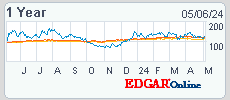Fear & Greed Technology products and services provide value to enterprises in five ways:
- Create new revenue
- Enhance existing revenue
- Reduce operational expenditures
- Reduce capital expenditures
- Reduce risk
When times are good, buyers start at the top of the list. When they are bad they start at the bottom. Think of it as Maslow's hierarchy of value propositions, ebbing and flowing with the business cycle.
On the VentureBlog (a must read for entreprenuers), this cycle is cast as fear vs. greed:
Fear Vs. Greed....The biggest tech spending revolutions have always been driven by greed at the opportunities available and the new applications possible. The personal computer revolution, the internet explosion, cellular phone proliferation and the huge companies created by them were made possible by end-users who suddenly had new applications available to them. If you're starting a company or building a product, it's certainly ok to rely on a bit of fear to get early sales. But ask yourself -- when the customer looks at the product, what's going to make them greedy? What will they do with your application that will make them money and their lives easier? What companies and products will be built that rely on your products' success before they can succeed? You can get your foot in the door with fear, but to really win, you have to inspire greed. [VentureBlog]
Beyond the business cycle, Zack Lynch points out that revolutionary waves of technology development follow a Pain-Pleasure Principle:
...the Pain-Pleasure Principle shows that once an upsurge of technological advancements focused on solving problems associated with pain gains momentum, we can assume that pleasure extensions of these technologies, where major profits reside, are not far behind.
VentureBlog joined Tim Oren in calling a bottom to this cycle:
...Venture capital will never lead the economy out of a slump: it's just too small a factor in the U.S. economy to ever matter. But increased venture capital investing is absolutely a leading indicator of better times ahead.
Actually its a following indicator. Venture Capital lags the public markets by one year. The good news is we are holding relatively steady in the public markets:

But if VCs are reporting increased dealflow and company formation, that's a good sign. As a following indicator of increased investment its a good source (ask others to call the top of a cycle).
So new companies are being formed. Many shortsighted ones will go after the easiest current proposition, reducing risk, especially for regulatory compliance. Some with make good businesses.
But great businesses are born at the bottom of the cycle finding niches where people are buying products that create rather than purely protect value. Technology has always predominantly been a source of competitive advantage, not complacent equivalence. And at the bottom of the cycle, the big leaky pipes have been patched.
At the bottom of the cycle less companies are placing big bets on new markets. Innovation instead springs from small bets of overlapping self interest. In particular, those where users are also producers, driven by commons-based peer production:

Figure 8: Innovation skyrockets when Users and Producers overlap
(as during the Linux development process).
Source: George Dafermos, Management and Virtual Decentralized Networks [52]
Decentralized technologies are the prime markets for this kind of innovation, because at the center are standards to foster open growth at less risk. From these wellsprings of innovation great techologies of advantage emerge.
10:33:18 PM 
|

